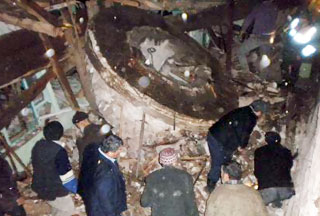
© UnknownLuggage piles up at Saint Pancras station, as Passengers wait amid further disruption to the Eurostar service in London.
Aside from disrupting train and air transport, snowstorms and freezing temperatures have killed at least 19 people across Europe.
Most of the deaths occurred overnight in Poland, where 15 people perished in icy temperatures.
In Germany, some areas recorded -33C temperatures and the country's third busiest airport, Duesseldorf International, was forced to close on Sunday due to relentless snowfall.
Meanwhile, Eurostar, the operator of high-speed passenger trains between London, Paris and Brussels, canceled services for a second day following electrical failures due to extreme condensations.
While weather is expected to have slightly improved by Christmas Day on Friday, forecasts across the continent predicted more snow and freezing rain over the next couple of days.

